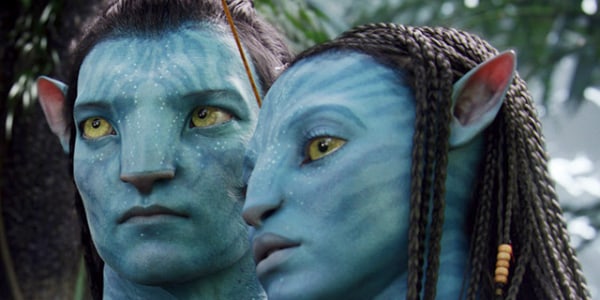The first two times science-fiction blockbusters were nominated for best picture at the Academy Awards, Woody Allen and Gandhi beat up on them.
Allen's small comic drama "Annie Hall" won best picture and director for 1977 over George Lucas' "Star Wars," which was then the biggest modern blockbuster.
Five years later, Richard Attenborough's "Gandhi," the film biography of Mohandas K. Gandhi, won best picture and director over Steven Spielberg's "E.T. the Extra-Terrestrial," which supplanted "Star Wars" at No. 1 on the box-office chart.
James Cameron's "Avatar, which now tops the revenue chart with more than $700 million domestically, is in a similar Oscar race against a modest box-office competitor, Kathryn Bigelow's war-on-terror drama "The Hurt Locker."
With $12.6 million domestically, "The Hurt Locker" is among the lowest-grossing best-picture nominees ever. Yet it's head-to-head with "Avatar" at the Oscars, both films leading the field with nine nominations each, the two considered the favorites to win the top prize.
"Avatar" has taken in nearly 60 times the domestic receipts rung up by "The Hurt Locker."
By comparison, "E.T." pulled in $359 million in its initial 1982-83 run, about seven times more than the $52.8 million haul of "Gandhi." "Star Wars" did $221 million over its original 1977-78 release, about five and a half times the $39.2 million take of "Annie Hall." (Counting rereleases, "Star Wars" has totaled $461 million domestically, and "E.T." has climbed to $435 million.)
Least-seen best picture winner ever?Should "The Hurt Locker" win, it might be the least-seen best-picture recipient in Oscar history — at least in theaters. The film has been expanding its audience since coming out on DVD in January, ranking in the top 10 on the sales and rental lists.
Box-office figures are sketchy for Hollywood's glory years, before television whittled down the movie audience in the late 1940s and early '50s.
Slideshow 14 photos
The world of ‘Avatar’
But best-picture winners typically were big-audience favorites such as 1951's "An American in Paris" or 1939's "Gone With the Wind" still considered the top all-time hit adjusted for inflation. In today's dollars, "Gone With the Wind" took in an estimated $1.46 billion domestically, more than twice the take so far for "Avatar," according to box-office analyst Paul Dergarabedian at Hollywood.com.
"Annie Hall" stands as one of the lowest-grossing best-picture winners, but even that film would be a $100 million hit in today's dollars.
In recent years, 2005's "Crash" is the lowest best-picture recipient on the revenue chart with $55.6 million.
The king of modern Oscar blockbusters is Cameron's "Titanic," which won best picture, director and nine other awards for 1997.
This season marks only the third time that science fiction has made it into the best-picture lineup. And with the category newly expanded to 10 movies instead of the usual five, "Avatar" was joined by another sci-fi hit competing for best picture — "District 9."
